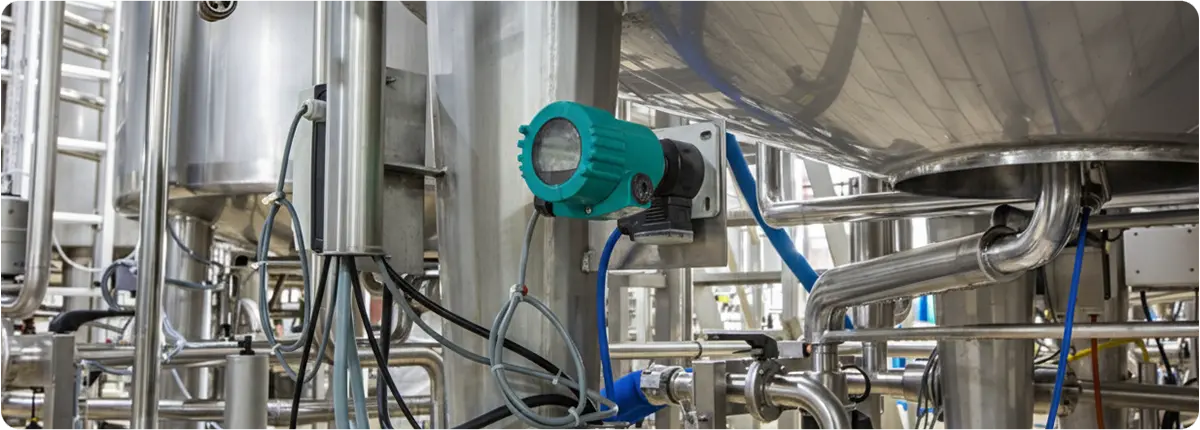Hydrostatic Level Transmitters and Industrial Applications
Hydrostatic level transmitters are devices that determine the liquid level in tanks by measuring pressure. As the liquid height increases, the hydrostatic pressure at the tank bottom rises. This pressure is measured by the transmitter and converted into an electrical signal to provide continuous level monitoring. They are widely used in applications such as water, chemicals, and food production.

WORKING PRINCIPLE
The principle is based on the hydrostatic pressure exerted by the liquid column.
Formula: P = ρ × g × h
Where:
P: hydrostatic pressure (Pa)
ρ: liquid density (kg/m³)
g: gravitational acceleration (9.81 m/s²)
h: liquid height (m)
The transmitter at the bottom of the tank measures this pressure, processes it electronically, and converts it into level information.
STRUCTURAL FEATURES
- Pressure sensing elements: piezoresistive or capacitive diaphragms
- Body materials: stainless steel, titanium, PVDF
- Output signals: 4-20 mA, HART, Modbus
- Protection class: IP67–IP68
- Temperature compensation for density variations
ADVANTAGES AND LIMITATIONS
Advantages:
- High accuracy (±0.1%)
- Unaffected by foam, vapor, or dust
- Reliable performance in deep tanks
- Continuous measurement capability
Limitations:
- Density variations may cause errors
- Not suitable for solid materials
- Risk of diaphragm clogging
- Requires periodic calibration
SELECTION CRITERIA
- Type and density of the liquid
- Tank depth and pressure range
- Mounting type (submersible, flanged, threaded)
- Environmental conditions (temperature, chemical resistance)
- Required communication protocols and integration
APPLICATION AREAS
- Water and wastewater treatment plants
- Chemical and petrochemical industries
- Food and beverage production
- Power plants (cooling water reservoirs)
- Agriculture and irrigation systems
STANDARDS
- IEC 61298 (pressure devices)
- ATEX & IECEx certifications (for explosive atmospheres)
- EHEDG (hygienic design – food sector)
CONCLUSION
Hydrostatic level transmitters are among the most widely used level measurement devices in industry due to their reliability and accuracy. With proper selection and regular maintenance, they can operate flawlessly for years while enhancing process safety.
 Convalve
Convalve